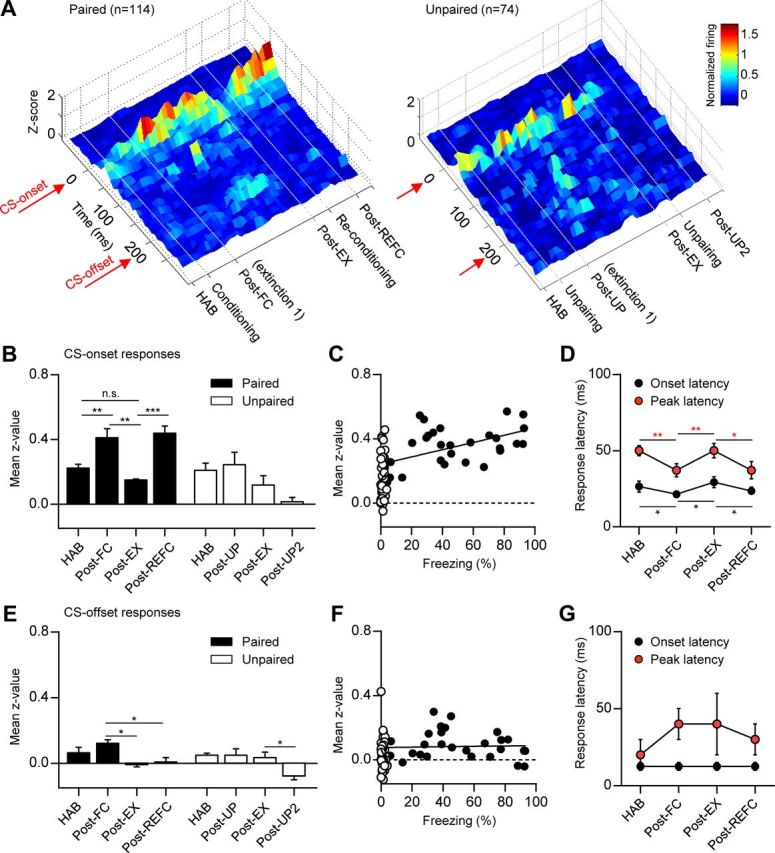Figure 3.

Average LA ensemble activity represents the updated CS–US association strength in reversible fear learning. A, Population z-score PETH throughout the behavioral training in the paired group (n = 114, left) and the unpaired controls (n = 74, right). The surface plot of the normalized firing rate was calculated and was smoothed for ±1 trials. B, Comparison of mean z-values calculated in a period of 0–100 ms following CS onset. The paired group displayed reversible CS-evoked responses in contrast to the unpaired controls. C, Correlation analysis between neural responses and freezing behavior. A significant correlation was observed only in the conditioned group (r = 0.55; filled circle), not in the unpaired controls (r = 0.08; empty circle). D, Comparison of the onset and peak response latency across the retention test sessions. Conditioning resulted in a more rapid onset and peak response latency compared with the preceding sessions. Error bars indicate SEM. E–G, The same analysis performed for the CS-offset responses. Fear conditioning did not significantly alter the CS-offset responses of the LA neurons. *p < 0.05, **p < 0.001, ***p < 0.0001.
